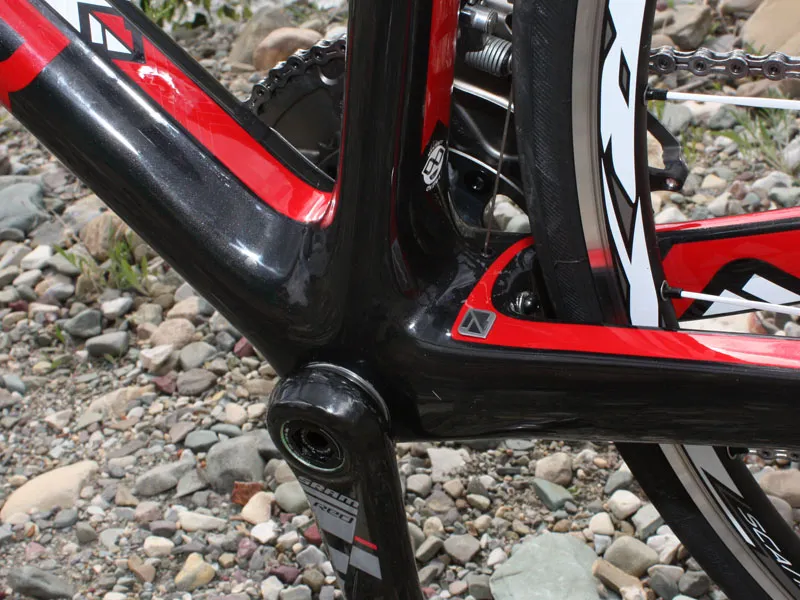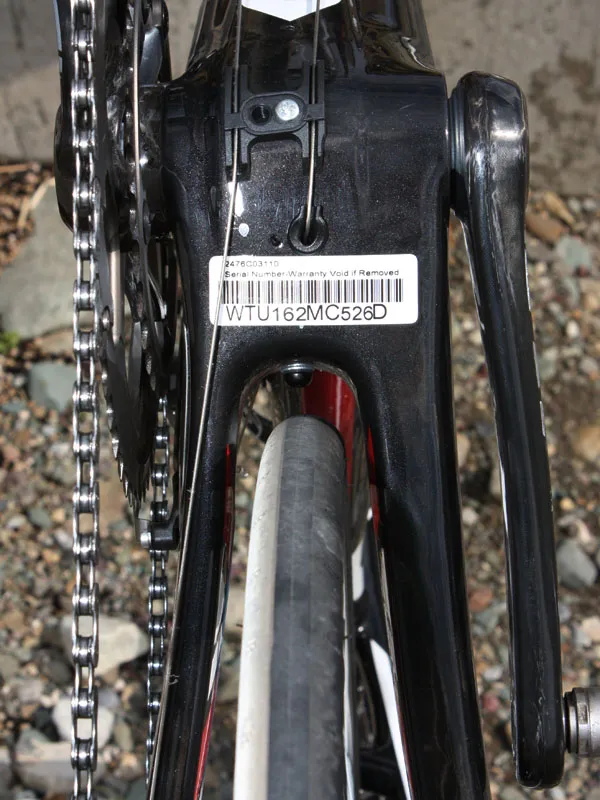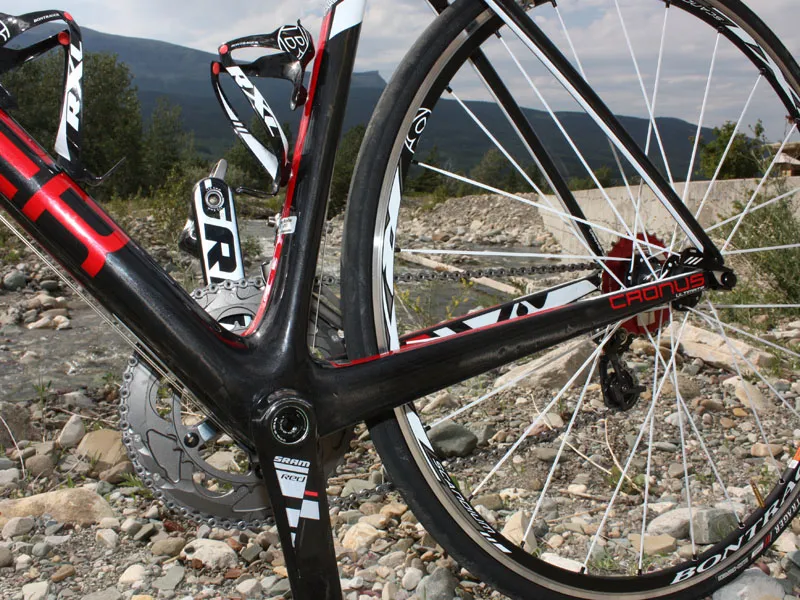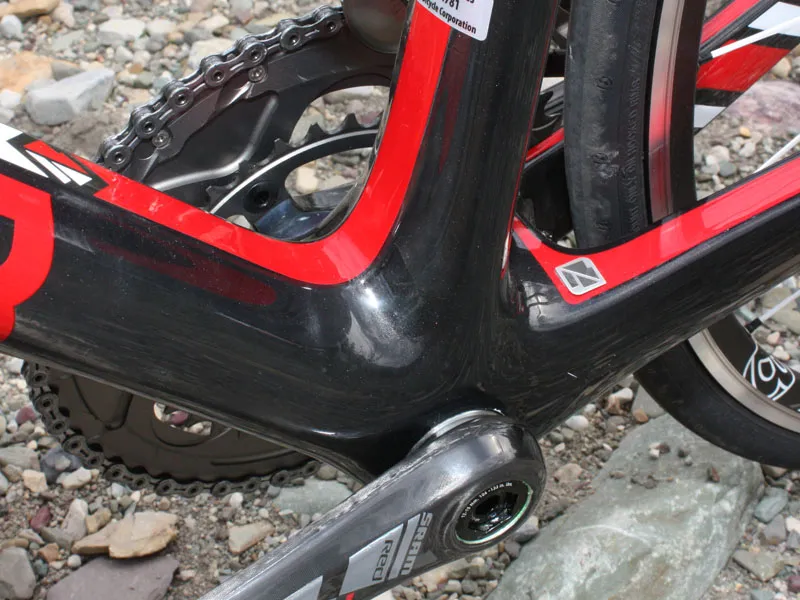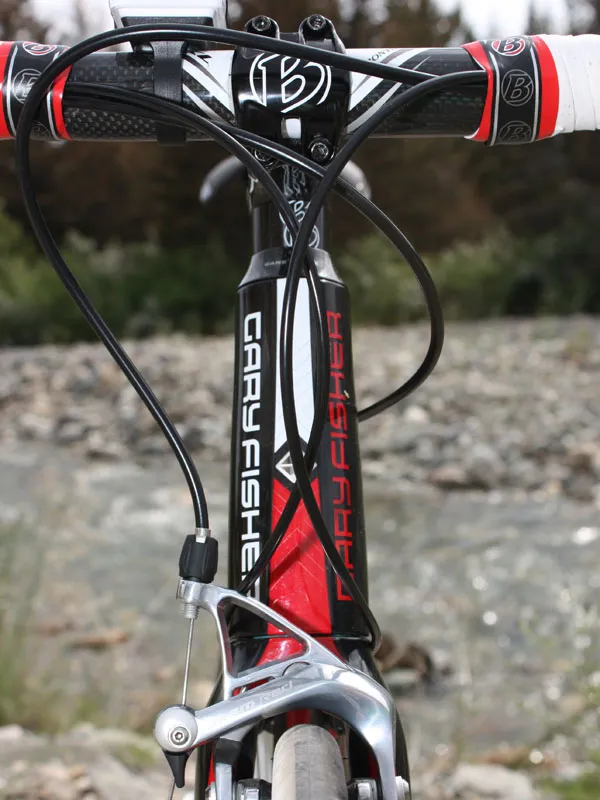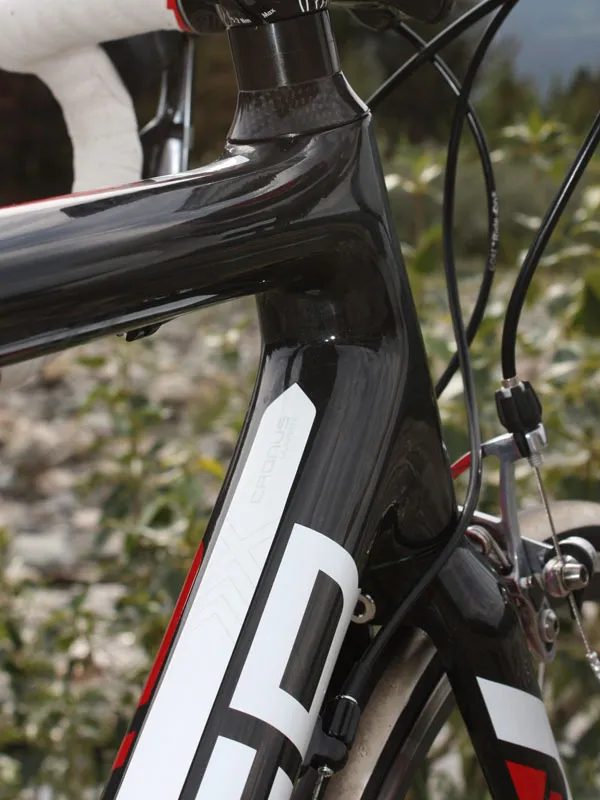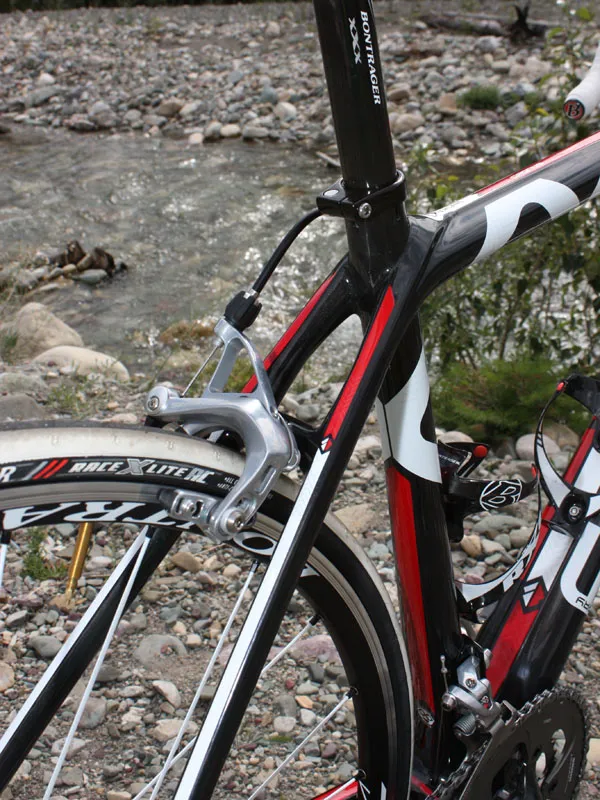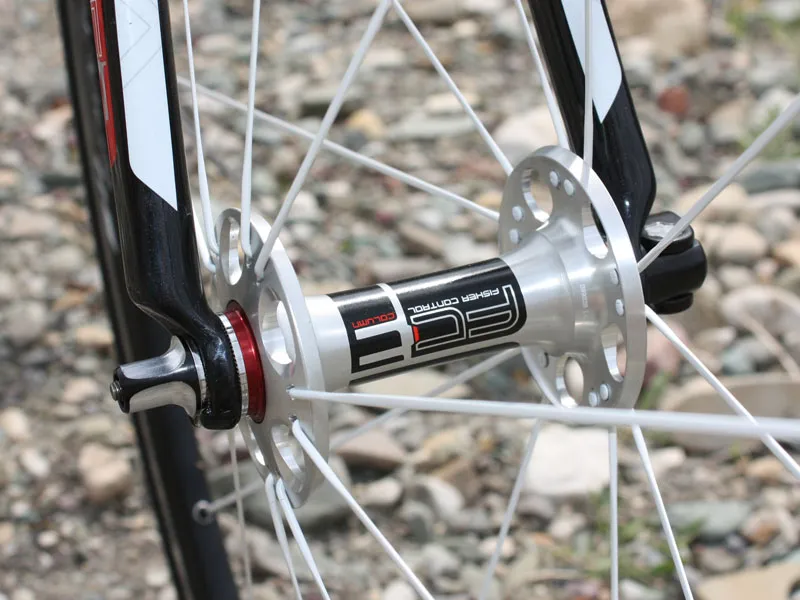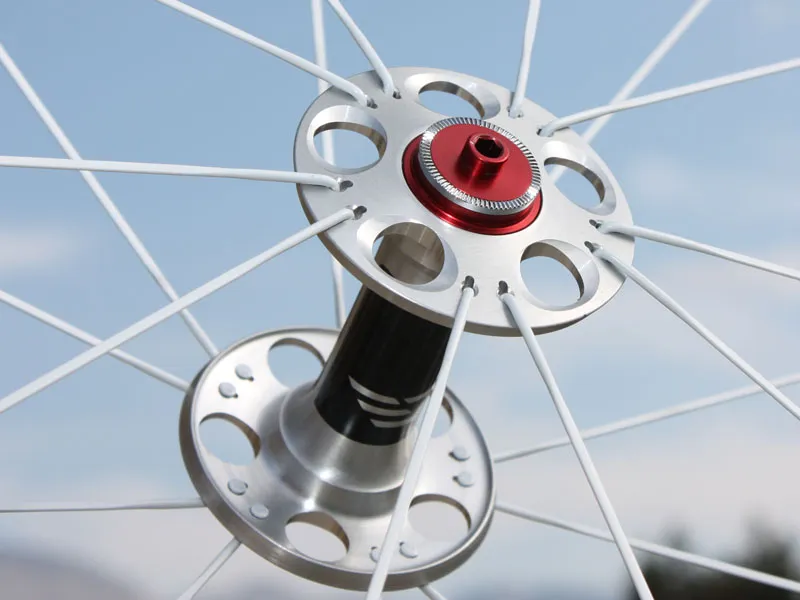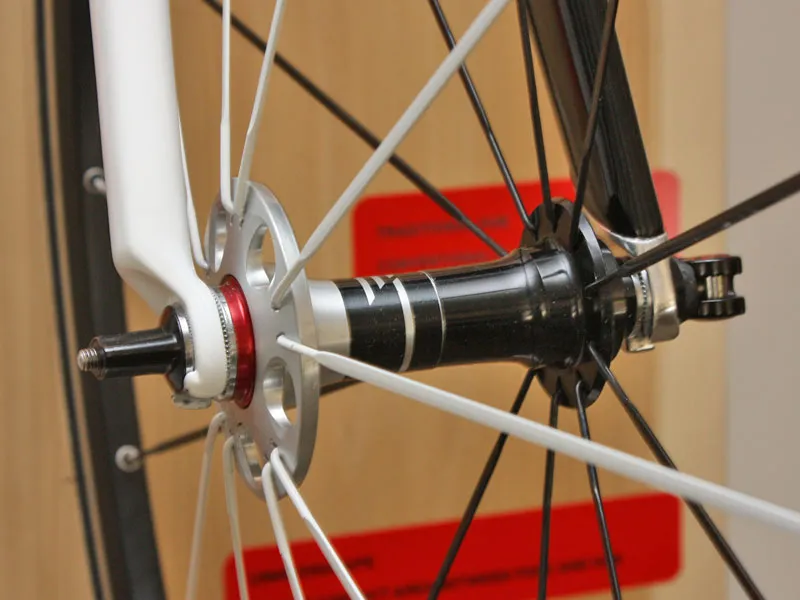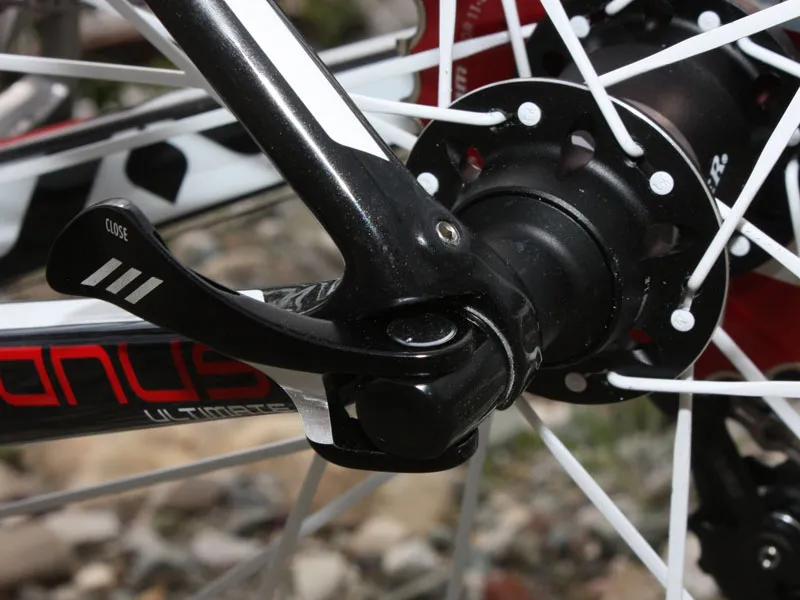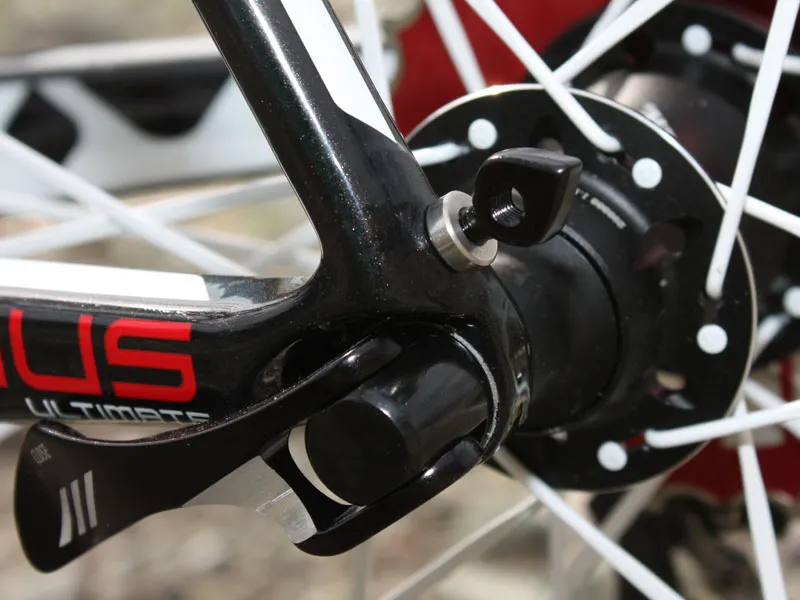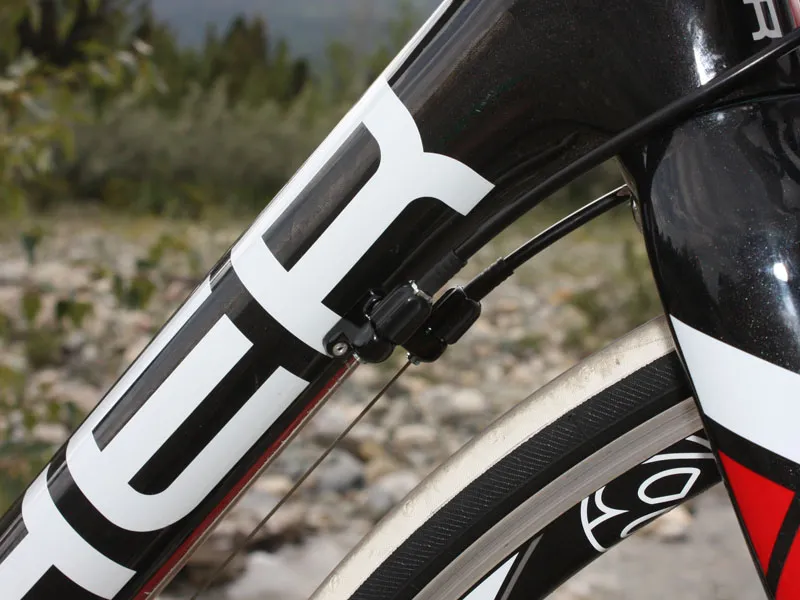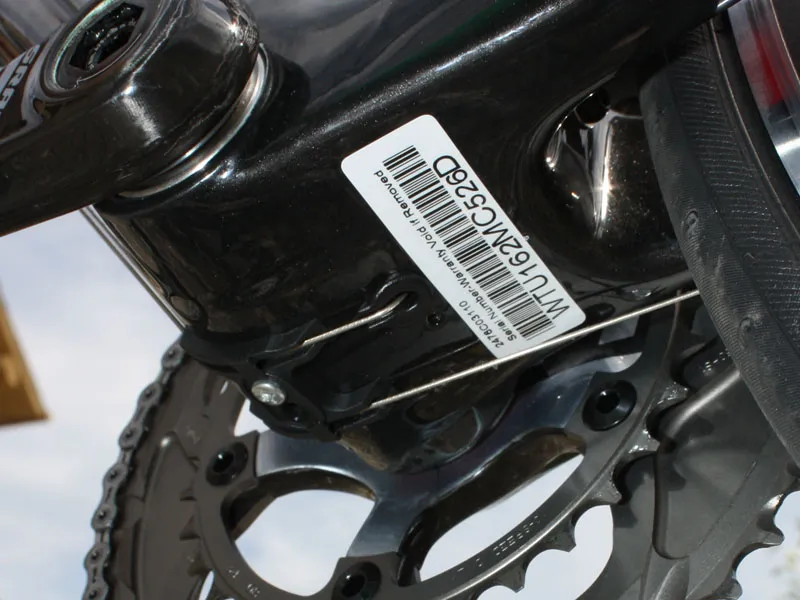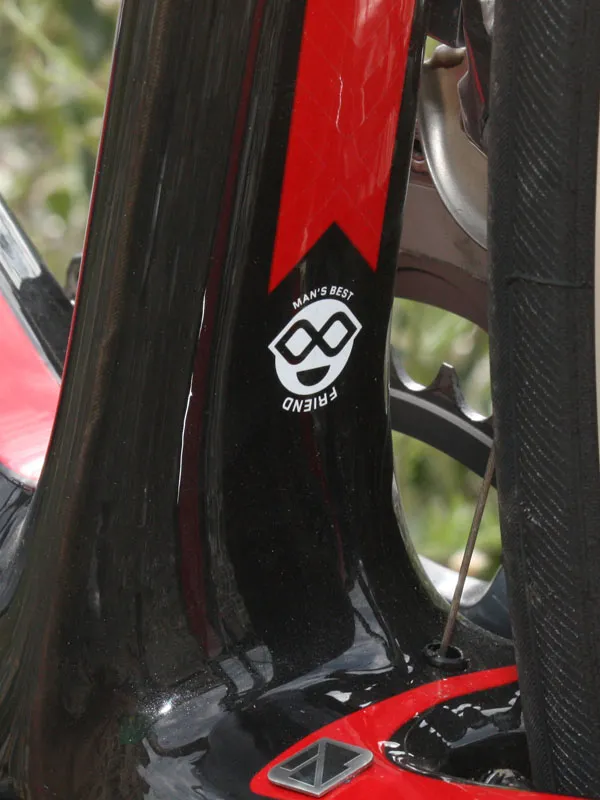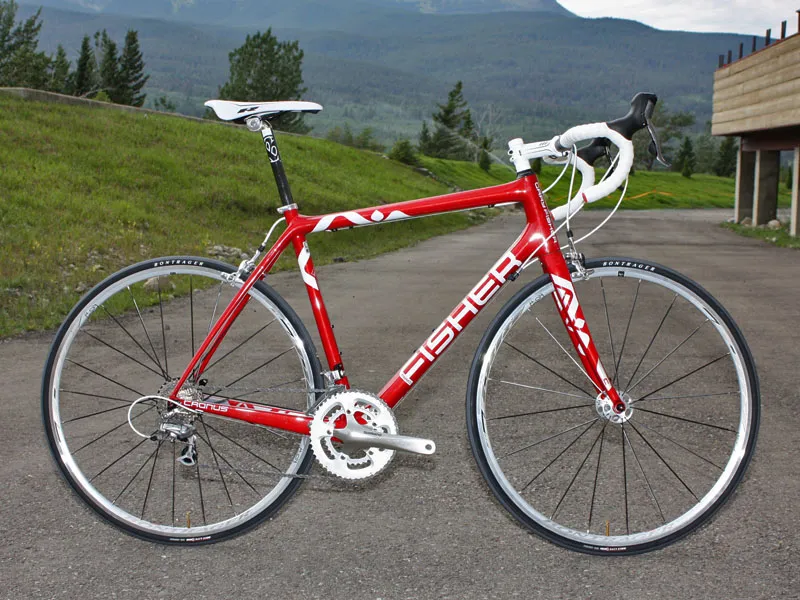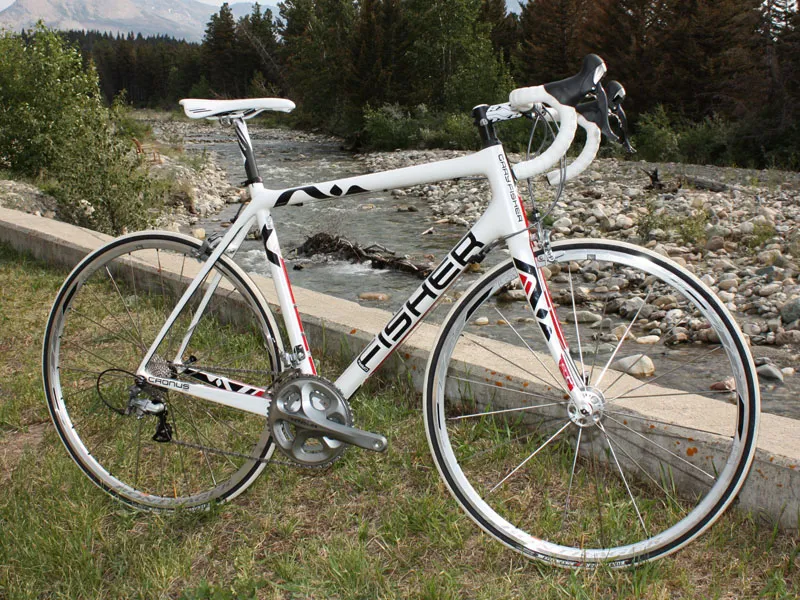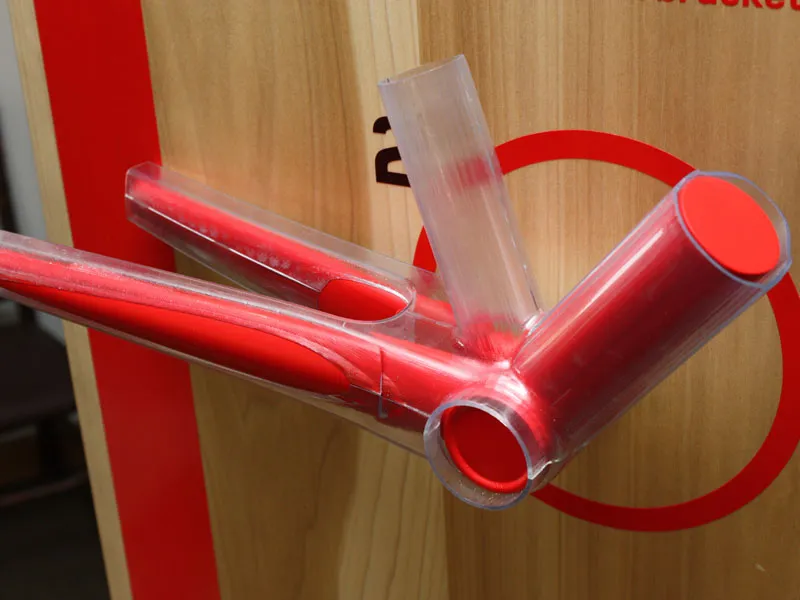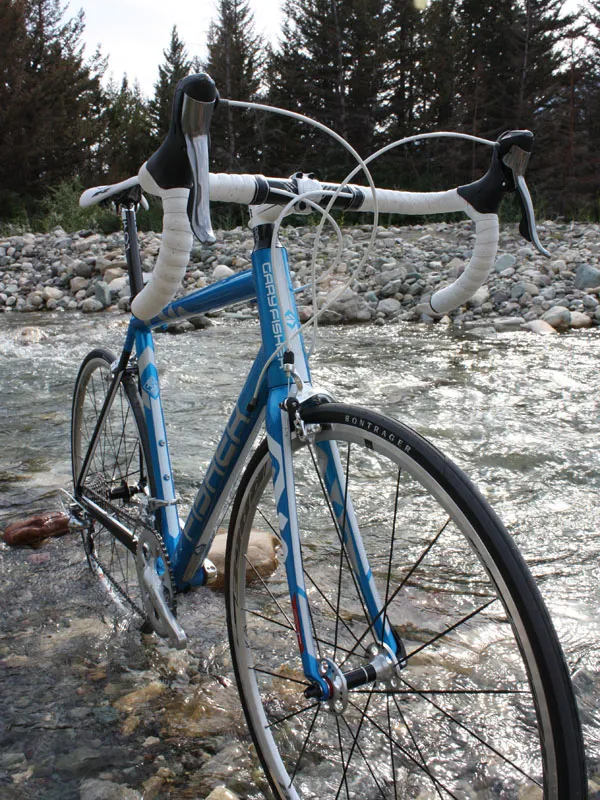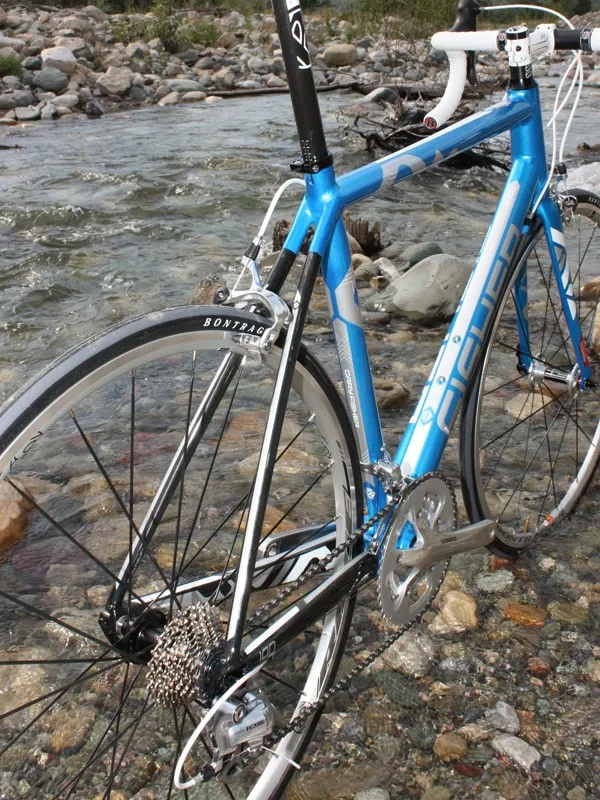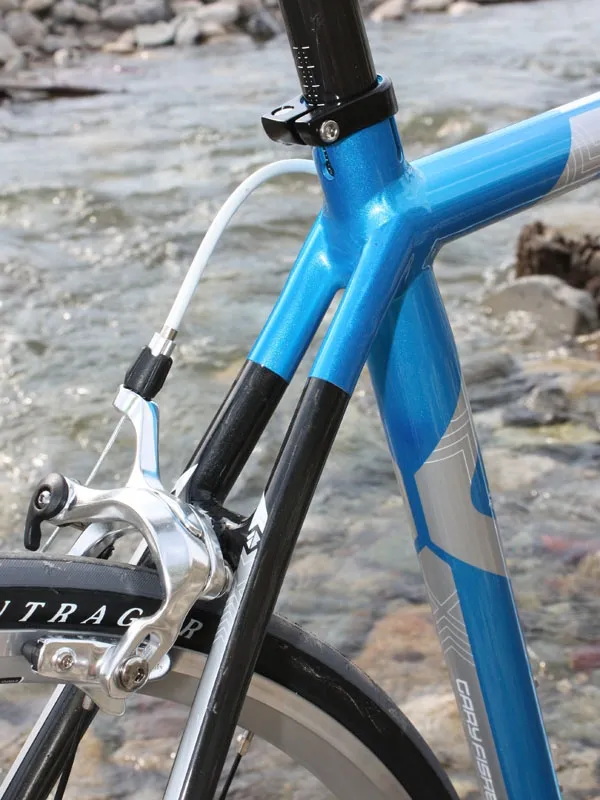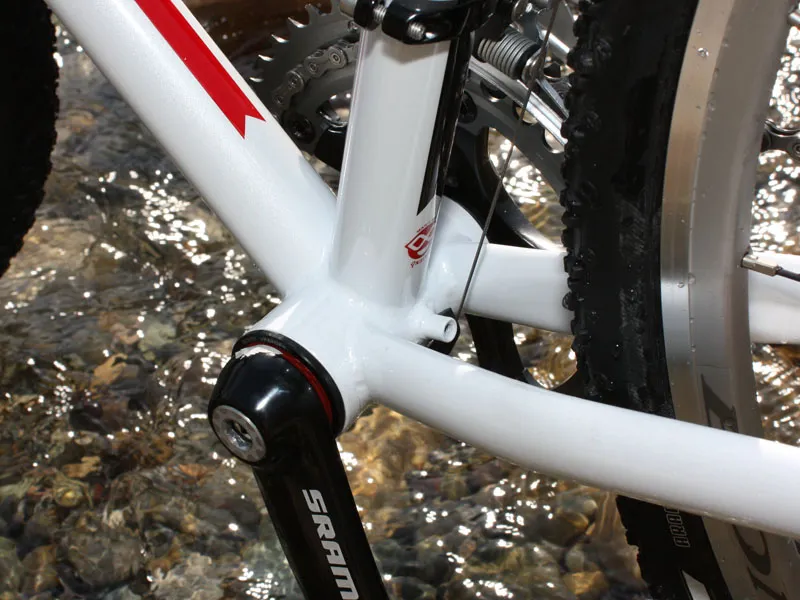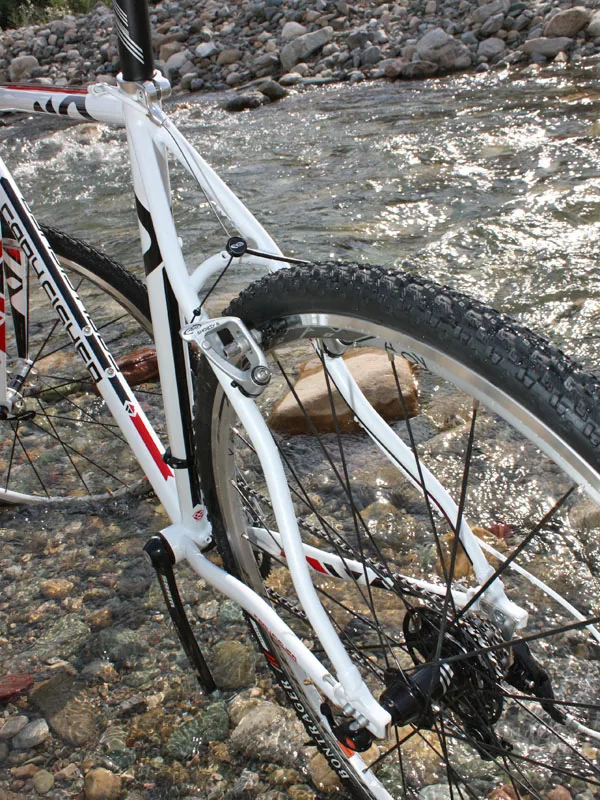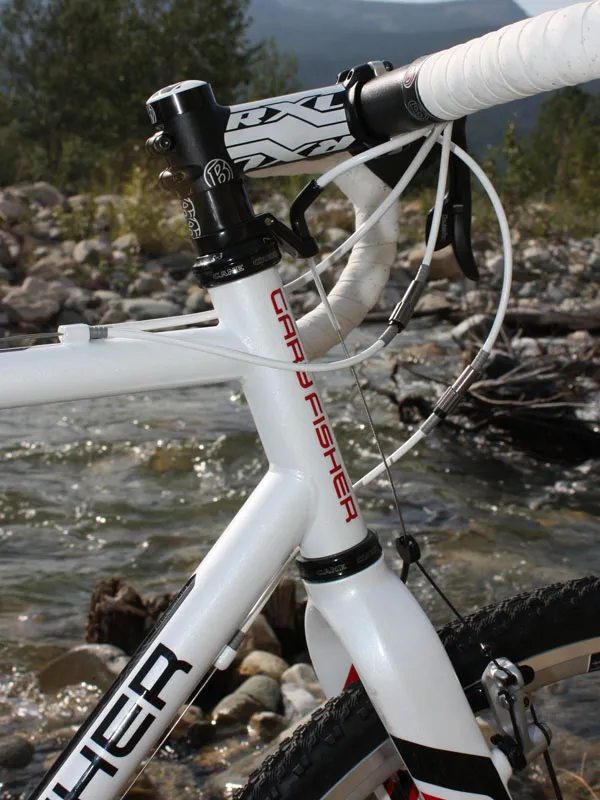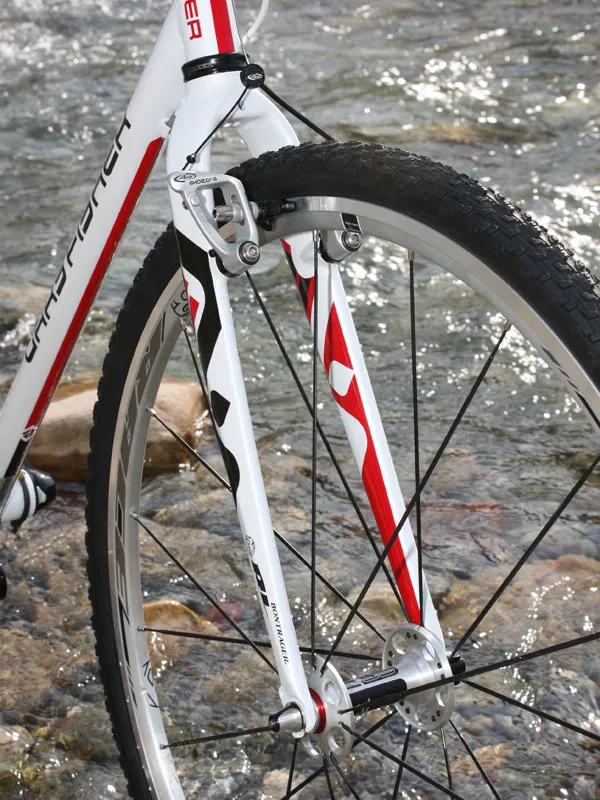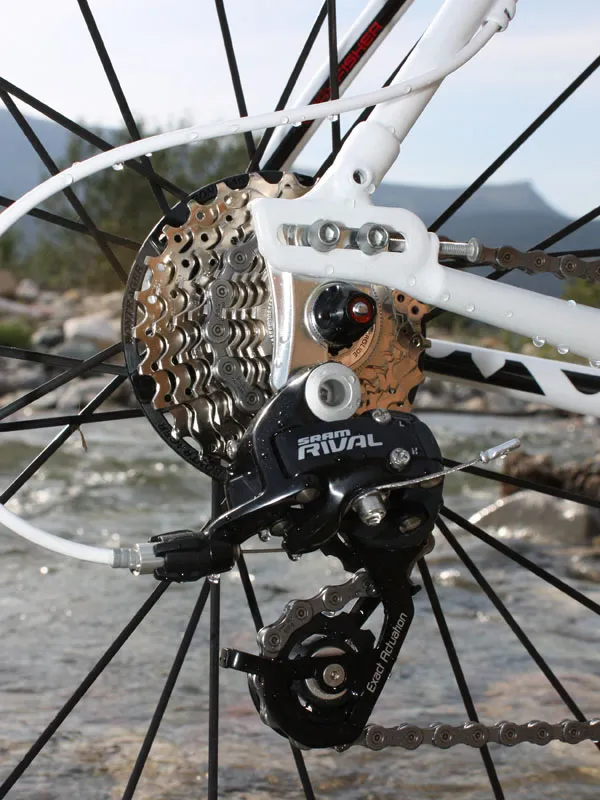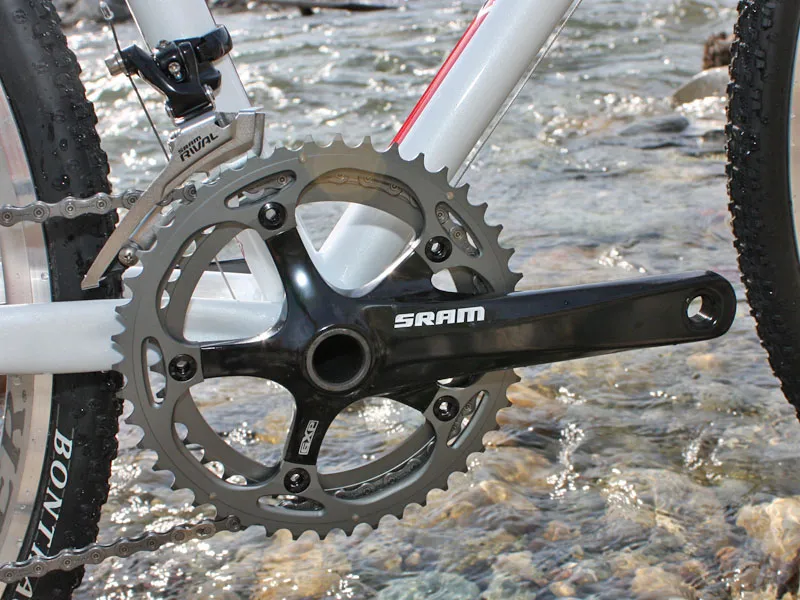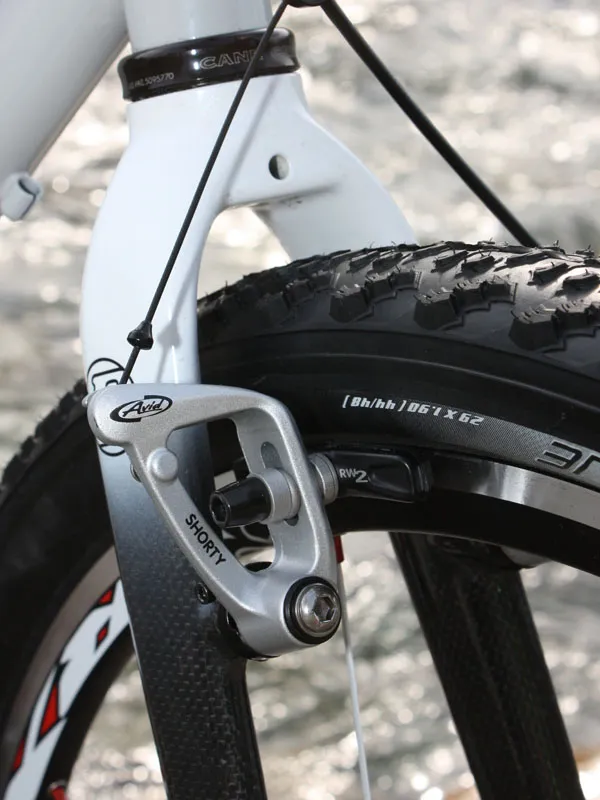Really? Road bikes from Gary Fisher?
Unbeknownst to many, the man commonly associated with the birth of mountain biking started out his career three decades ago as a road racer and has spent a healthy portion of his life on the pavement since then. For 2010, Gary Fisher will bring to market over a dozen new road models comprising four separate frame platforms as well as three cyclo-cross bikes built around an all-new steel frame.
Rather than just debut yet another line of pure race bikes though the new Gary Fisher bikes espouse the concepts of 'smartly different' and 'Race Utility'. In other words, minimal weights and a few clever features still make the bikes very competition worthy but they also offer more practicality than the usual race only bikes.
Go fast with the Cronus
Take the new Cronus flagship for example, whose carbon frame weighs just 900g (56cm, fully painted) and builds up to a feathery 6.67kg (14.7lb) package in top-end Ultimate trim with SRAM Red and Bontrager Race X Lite FCC aluminium clincher wheels – easily well under the UCI weight limit if you swap in a set of carbon tubulars.
On the stiffness, side, the Cronus borrows the integrated BB90 bottom bracket shell from its Trek Madone cousin with its drop-in bearing design but takes even more advantage of the extra real estate it affords with notably bigger tube cross sections. The seat tube flares in width down below as with the Madone but the ovalised down tube measures a gargantuan 76mm across and the chain stays are visibly taller and wider. All of these tubes are asymmetrical as well to provide just enough clearance for a triple-chainring drivetrain if so desired.

The Cronus Ultimate, Gary Fisher's road flagship
Up front, Gary Fisher introduces the 'Fisher Control Column' for more precise handling. In addition to the tapered 1 1/8"-to-1 1/2" E2 steerer as used on the Madone, FCC also includes more broadly spaced 'Wide Stance' fork blades (spare us the Larry Craig jokes, please) plus a special front hub that and wheel design with extra-tall flanges pushed all the way out to the oversized 25mm-diameter end caps and heads-in spoke lacing for more triangulation.
In total, Gary Fisher says FCC yields a 27 percent improvement in lateral stiffness as compared to the next 'best in class' 2009 model year competitor without an adverse effect on comfort. Also, while FCC front hubs and wheels won't work in most other forks, the FCC fork's standard 100mm OLD dimension means you can still run any of your favourite race wheels without any problem.
If it sounds like this should produce a stiffer frame than the Madone, you win a lollipop (just tell the clerk at your local 7-Eleven we said so). After some persistent prodding, Gary Fisher product manager Aaron Mock even reluctantly admitted as such though he couldn't – or wouldn't – say by exactly how much.
Geometry-wise, the Cronus features relatively long top tubes for a given size along with generously proportioned head tubes (roughly on par with the Trek Madone's 'Performance' fit but with greater variation across the size range) to open up the rider's torso for better breathing and power output. Bottom bracket drops measure between 68-70mm for stability while the middle-of-the-road head tube angles range from 69.4 to 74 degrees depending on the size. Fork rakes vary from 45-55mm though to keep trail (and thus overall feel) relatively consistent throughout.
Go long
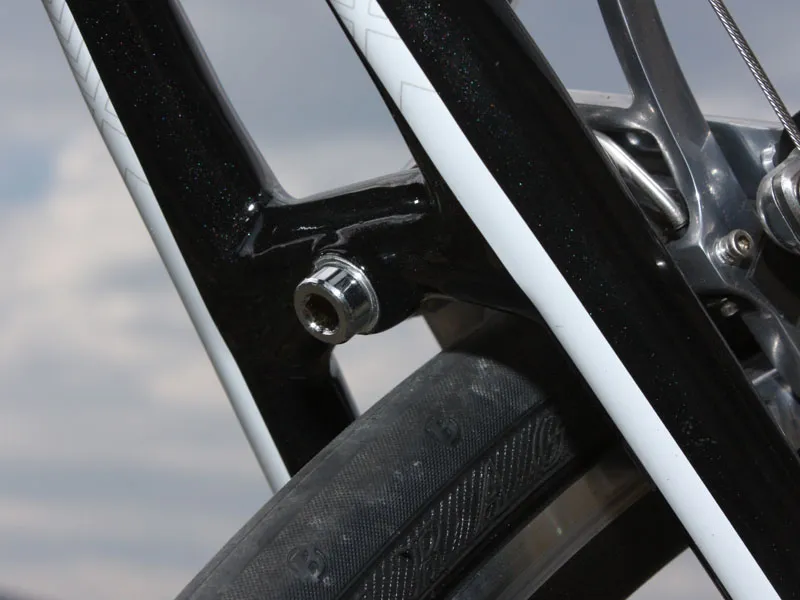
Plenty of tyre clearance and nifty fender mounts on the rear brake nuts
And what about utility on the new Cronus? In addition to the requisite 'stiff and light' checkboxes, Gary Fisher acknowledges that many racers will use their bikes for more than just racing and typically won't enjoy the same level of support as the pros: training rides don't always happen on smooth roads, not every bit of Earth is paved, Mother Nature doesn't always cooperate, and when something goes wrong there's no mechanic to hand the bike off to while you go and get your daily massage and muesli.
As such, ample clearances all around allows for up to 28mm-wide rubber, cable routing is fully external for easier maintenance, and the standard 27.2mm-diameter round seatpost adds comfort relative to deeper-section integrated designs and makes the bike easier to pack when travelling to events.
In addition, when the rain starts to fall – Pacific Northwest and UK riders pay attention here – very clever hidden fender mounts at the brake mounting nuts, chain stay wishbone, and rear dropouts and fork tips readily accept full-coverage fenders with virtually no disassembly required. Even better, the Cronus does all this while still using standard-reach brake callipers and you can still fit 700x25c tyres under the fenders with room to spare.
Even sizing is well thought-out: Gary Fisher will offer the Cronus platform in eight standard sizes plus five women's-specific versions, each with consistent 20mm stack and 6mm reach increments for more logical size choices with no overlap.
Going to the sun
Our initial test run took place in rugged Glacier National Park, Montana and in spite of its relative brevity – and unfortunately for Trek – it's immediately apparent that the Cronus is stiffer and snappier under power than even the newest Madone, and seemingly not by as subtle a margin as the roughly 50g weight difference would suggest. Whereas the latest Madone is slightly smoother and perhaps better suited for longer rides, the Cronus is firmer-riding, edgier and more eager, making it an excellent option for US-style criteriums as long as the longer head tube suits you.
As promised, front-end rigidity in particular is especially superb and most noticeable when out of the saddle. Rise up to crest a climb with the bulk of your weight on the hoods and it feels more like you're rocking back and forth on a solid T-shaped pole instead of a bicycle. In fact, front-end stiffness on the Cronus is so good that it unfortunately almost makes the rear end with its narrowly spaced hub flanges feel one step behind.
As intended, the fit seems well-suited for a variety of purposes – our tester worked well for the 600m (2000ft) slog up to the top of Logan Pass, the moderately curvy descent back down, as well as the headwind-riddled drag race back to the St. Mary's side after we hit the flats again. We'll know more after we get some miles on familiar terrain on a proper production tester but the initial impression so far is quite favourable.
Go figure: the 'father of mountain biking' apparently knows a thing about road riding, too.
Other options: Ion, Rail, Presidio, Ewrin and Lane
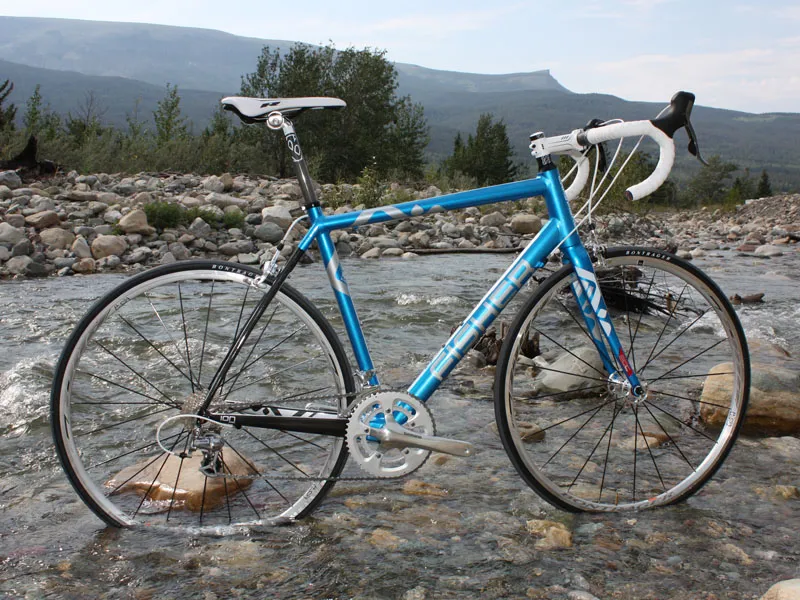
The Ion aluminium model
Gary Fisher will also offer an all-new aluminium and carbon platform called Ion. This mid-range offering also uses the complete FCC front end concept plus a rear end lifted almost entirely intact from the Cronus but a front triangle built with butted aluminium. In addition, the bottom bracket uses a slightly more conventional forged BB86 aluminium bottom bracket shell with press-fit cups instead of the Cronus' drop-in carbon unit.
According to Mock, the Ion's Cronus-like tube sizes make it "the stiffest bike we've ever made" and even trumps the carbon flagship but at a fairly hefty weight penalty – a 56cm painted Ion frame is over 50 percent heavier than the Cronus with a claimed weight of 1,375g (3.03lb). The Ion still boasts the same handy versatility features, though, such as the hidden fender mounts, ample tyre clearance, standard 27.2mm round seatpost and external cable routing.
While the Ion might not appeal to wispy climber-types looking to minimize their bike weight-to-rider weight quotient, power riders might give the Ion a closer look.
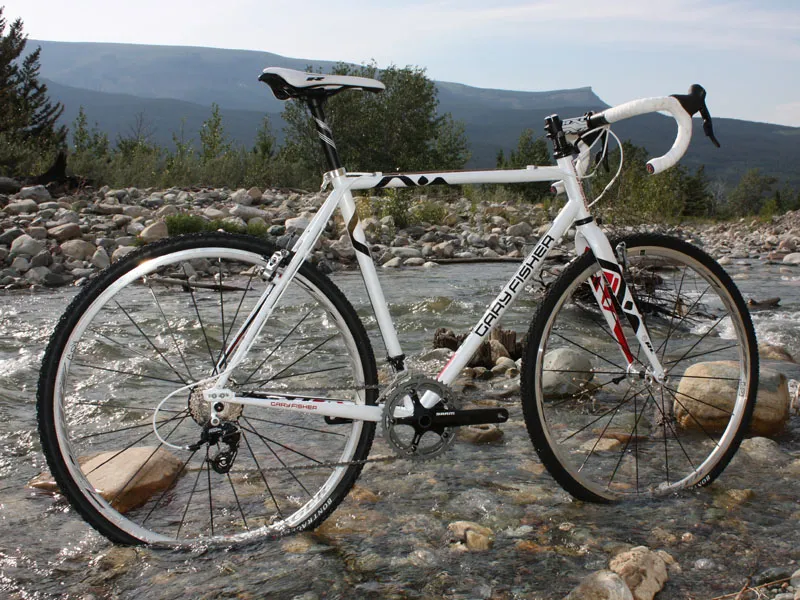
The Presidio heads Gary Fisher's cyclo-cross range
The all-aluminium Rail road bike will carry into the new year unchanged but the 2010 season will bring an all-new range of 'cross bikes from Gary Fisher, all of which will share the identical butted steel frame. Mock acknowledges that the ferrous construction isn't as light as aluminium or carbon (claimed frame weight is 2,120g and the top-end Presidio is over 9.5kg) but the promised payoff is a smoother and more communicative ride plus a more appealing price point for privateer racers. The smaller tubes paired to the extra-wide BB86 press-fit bottom bracket shell also makes for massive tyre clearance – enough to actually run 29x1.9" MTB tyres with room to spare.
Up front, the steel bikes get a partial FCC treatment with the Wide Stance fork used throughout and FCC hub on the top-end Presidio but a straight, non-tapered 1 1/8" steerer. All models still get a dose of versatility though with full fender mounts at both ends, sliding dropouts across the board for geared or singlespeed use.
Gary Fisher will also use the same frame for the commuter-friendly Lane, which will arrive with smooth tyres and a triple crankset.
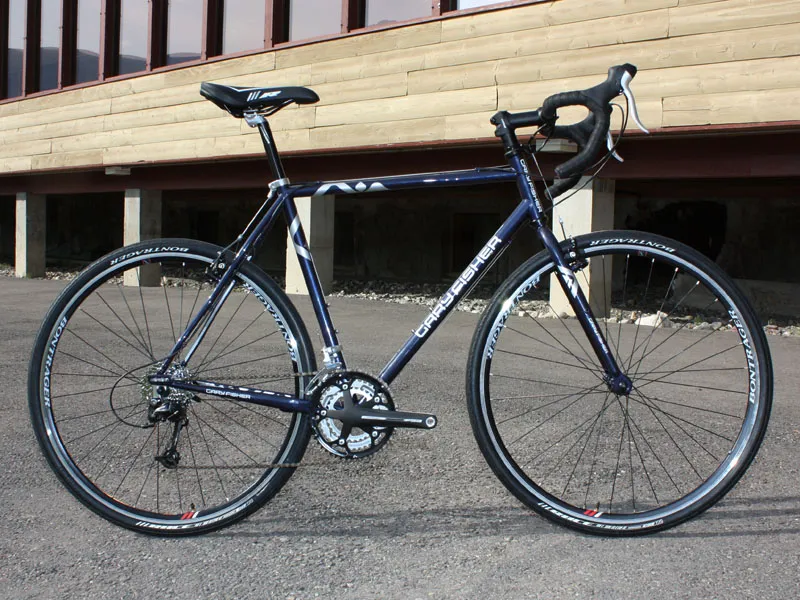
The Lane commuting bike
Pricing and availability
Cronus models will begin to trickle into stores beginning August 1. The top-end Cronus Ultimate will fetch US$5,249.99 with SRAM Red while the mid-range Cronus Pro slots in at US$3,299 with Shimano Ultegra 6700. The base-level Cronus will substitute in a Shimano 105 mix for US$2,399.
The Ion will arrive a tad later around October 1 and will debut with two models: the Ion Pro at US$2,039 with Shimano 105 and the Ion Super at US$1,489.99 with Shimano Tiagra.
Unfortunately, 'cross bikes will accompany the Ion models at around the same time frame and thus will pretty much miss the coming mud season. The US$1,979.99 Presidio will come with a carbon-legged fork, SRAM Rival and Bontrager Race FCC wheels while the Erwin will come with Shimano Tiagra (pricing still to be determined).


